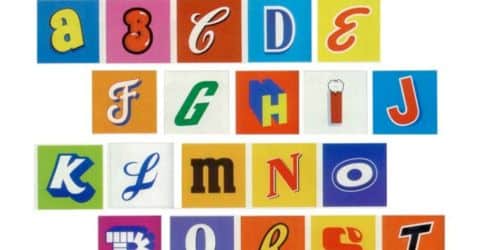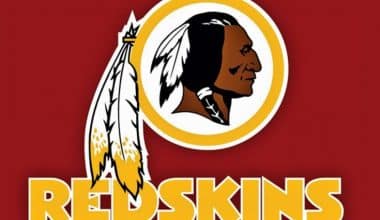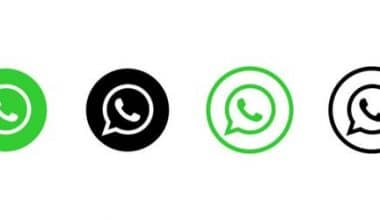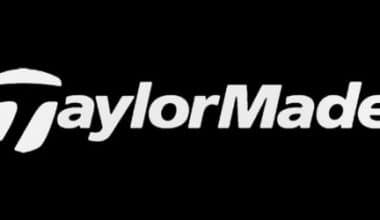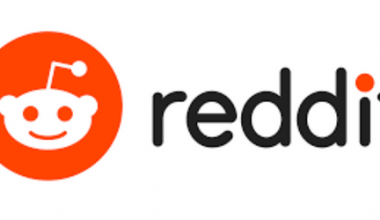Alphabet is the parent company of Google and eight other subsidiaries. It is one of the most valuable companies in the world, one of the top five Internet companies in the United States, and the third most profitable technology company. In 2015, Alphabet joined the digital sector to simplify one of the world’s largest corporations, making it more visible and clear with the help of its logo. In the course of this article, we will go over how effective the Alphabet logo has been, what it looks like as well as the evolution of the brand itself.
Alphabet Logo/Brand Overview
In 2015, Google changed its name and logo, which led to the creation of a new company and a trademark. Alphabet came out with a logo that was simple but effective: a red letter on a white background. It was created as a custom logotype using the Product Sans typeface.
Today, the Alphabet logo serves as the visual ambassador for Alphabet, the third-largest technology corporation by sales. Similarly, Alphabet now serves as the parent corporation for Google and its subsidiaries. So, certainly, it is organized as a group of businesses.
As a result, it serves as the parent company for Calico, CapitalG, Google Fiber, and X Development, to mention a few. The name “Alphabet” refers to a group of letters that signify language. Fortunately, that corresponds to how the company indexes its search engine.
The name was inspired by the previous Google Hamburg office’s street address, ABC-Straße. Sundar Pichai is the current CEO. In addition, the founders—Sergey and Lawrence—control the company. Again, both are members of the company’s board of directors and employees.
Today, the logo leads a firm with over 150,000 employees and a $257.63 billion revenue.
Alphabet Inc.’s History
On August 10, 2015, Google Inc. announced plans to form Alphabet Inc., a new public holding company. This news was made by Google CEO Larry Page in a blog post on Google’s official blog.
Alphabet would be formed in order to restructure Google by transferring subsidiaries from Google to Alphabet, thus restricting Google’s scope. Google would be joined by additional companies such as X Development, Calico, Nest, Verily, Fiber, Makani, CapitalG, and GV.
Sundar Pichai, Google’s product chief, took over as CEO, succeeding Larry Page, who moved on to manage Alphabet alongside Google co-founder Sergey Brin.
Page claimed in his announcement that the intended parent company would enable “greater management scale, as we can run businesses independently that aren’t very tied to Google.”
He clarified that Google would be “a bit shrunk down” as a result of the new holding company, with “businesses that are very far afield of our major internet goods held in Alphabet instead.”
He also went on to say that the reorganization was motivated by the desire to make Google “cleaner, more accountable, and better,” and that he wanted to improve “the transparency and oversight of what we’re doing.”
Read Also: The Google Brand Strategy: How it Dominates Markets
On the other hand, former executive Eric Schmidt (currently a Technical Advisor) acknowledged at a conference in 2017 that the concept for this structure came from Warren Buffett and his Berkshire Hathaway management structure a decade ago.
Schmidt said that he was the one who got Page and Brin to meet with Buffett in Omaha so they could see how Berkshire Hathaway worked as a holding company with subsidiaries run by CEOs who could be trusted to run their businesses.
Google Inc. was originally constituted as Alphabet’s owner before becoming a subsidiary of Alphabet. After a placeholder subsidiary was made for Alphabet’s ownership, and that subsidiary was merged with Google, the roles switched. The stock of Google was then transformed into Alphabet’s equity. A holding company restructuring such as this can be done without a shareholder vote under Delaware General Corporation Law (where Alphabet is formed).
On October 2, 2015, the restructuring process was finished. Alphabet kept Google Inc.’s stock price history and trades under Google Inc.’s old ticker symbols “GOOG” and “GOOGL”; both classes of shares are components of major stock market indices like the S&P 500 and NASDAQ-100.
On December 3, 2019, Page and Brin stated that they will stand down from their respective positions, but would continue to be employees and have the majority vote on the board of directors. Sundar Pichai, the CEO of Google, will take over as CEO of Alphabet while continuing to lead Google.
In mid-2022, the company underwent a stock split.
Controversies and Lawsuits
Alphabet Inc. sued Uber in 2017 because Uber had technology that was similar to Alphabet’s self-driving car technology, which was exclusive to Alphabet. Alphabet’s Waymo subsidiary had been working on autonomous vehicle technology for almost a decade (the self-driving vehicle division). The unique technology is linked to 14,000 papers that an engineer who used to work for Waymo and then went to work for Uber is said to have stolen.
The lawsuit was settled in February 2018, with Uber agreeing not to utilize the disputed self-driving technology and also agreeing to pay Waymo with a 0.34% ownership share, equivalent to around $245 million at the firm’s early 2018 worth.
A class action lawsuit was launched against Google and Alphabet in October 2018 as a result of “non-public” Google+ account data being disclosed as a result of a privacy issue that allowed app developers access to user’s private information. The lawsuit was settled in July 2020 for $7.5 million, with claimants receiving at least $5 and up to $12 each.
The US Department of Justice launched an antitrust case against Alphabet in October 2020, alleging anti-competitive behavior.
On December 2, 2020, the National Labor Relations Board filed a complaint alleging that Alphabet Inc illegally monitored and questioned many Google employees. Employees were dismissed for attempting to form a union and protesting business rules. In addition, the board claims that Google illegally placed employees on administrative leave in retaliation. Alphabet Inc has denied any wrongdoing and stated that it behaved in accordance with the law.
Read Also: HOW DOES GOOGLE MAKE MONEY? The Revenue Streams In 2023
Alphabet Inc., Google’s parent firm, said on June 7, 2021, that it had settled an antitrust complaint with the French Autorité de la concurrence for $270 million. The payment was less than 0.7% of Alphabet Inc.’s annual earnings.
On June 12, 2021, Japan stated that it would initiate an antitrust investigation into Alphabet Inc. and Apple Inc. to explore whether their dealings with Japanese smartphone producers violate current antitrust laws or require new ones.
In May 2022, Russian authorities seized Google’s Russian bank account, causing the company to declare bankruptcy one month later due to its inability to pay vendors and employees. They do, however, continue to provide free services such as Google Search, YouTube, Gmail, Maps, Android, and Play.
Finance, Investing, and Acquisitions
According to Alphabet’s 2017 annual report, 86% of its revenue came from performance advertising (through user clicks on AdSense and Google Ads) and brand advertising.
53% of these were generated through its international businesses. In 2017, this equated to total sales of US$110,855 million and a net income of US$12,662 million.
Alphabet Inc. passed Apple on February 1, 2016, to become the world’s most valuable publicly traded company. Apple took back the top spot on February 3, 2016. Experts said that Apple’s poor performance was due to a lack of new ideas and more competition from China.
As of 2019, Alphabet is ranked No. 15 on the Fortune 500 list of the largest firms in the United States by total revenue.
Alphabet became the fourth US business to reach a $1 trillion market value on January 16, 2020, joining the trillion-dollar corporations club for the first time.
Alphabet had its slowest quarterly growth in over a decade in October 2022, with less money coming in. The economy slowed down because of the possibility of a global recession, the strength of the US dollar, and pandemics.
Investments
In November 2017, Alphabet Inc., along with Andreessen Horowitz and 20th Century Fox, led a $71 million Series A financing in music startup UnitedMasters, established by Steve Stoute.
In addition to investing in startups, Alphabet also invests in more mature companies, such as Uber, which is publicly traded, and Medium, which is privately held.
Acquisitions
When the company’s investments in 2017 were looked at, it was found that it was the most active investor during that year, more so than Intel’s capital arm and its own biggest customer. In the 2017 fiscal year, Alphabet, Inc. purchased seven of its own venture-backed firms, with Cisco coming in second, having acquired six of the company’s earlier investments.
The Evolution Of The Alphabet Logo And Its History
The Alphabet logo has not been changed since its inception. It’s seven years old and still relevant. It exudes a timeless charm that makes it appealing, readable, noticeable, and scalable. You can instantly decode its personality everywhere it appears. However, predicting its future is difficult. Perhaps one day it will be updated. But, for now, let us remain cool and examine the current one.
2015—Present
Alphabet, Google’s parent company, features a straightforward logo. It’s a legible wordmark in sentence case letters. This visual identity is a custom sans-serif type built from the Product Sans font. Although the Alphabet wordmark is red, it can be used with a variety of other colors.
Why Does the Alphabet Logo Work?
Ever wondered why the Alphabet logo is effective even though it hasn’t undergone any changes at all? Well, here’s why:
The Logotype Can Be Read:
In logo design, illegibility is a crime. It makes it difficult for individuals to simply identify with the brand. Remember that the name of your brand is essential in promoting your goods and services. Fortunately, the Alphabet wordmark is extremely readable, which aids in the formation of linkages.
The Logotype Is Basic:
Alphabets’ innovative designers are masters of basic designs. They have demonstrated this quality in the several visual identities they have designed for Google. As a result, they used the same design concepts to create the Alphabet logo. As a result, the logo becomes instantly recognizable.
The Logotype Is Recallable:
The Alphabet logo is powerful: it grabs attention instantly and leaves a lasting impression. To be memorable, a logo should be simple, one-of-a-kind, and eye-catching. With this in place, your audience will be able to recollect your brand rapidly. Remember that distinctive logos foster long-term relationships.
The Versatility of the Logotype:
A good logo is flexible and can be used in many different ways without losing its appeal. As a result, regardless of the medium, such logos can reach their intended audience. Fortunately, the Alphabet trademark falls under this category. Because of its simple design, it may be used in any marketing channel.
The Logotype Is Eternal:
Despite the fact that the Alphabet wordmark has been in use for seven years, it will endure the test of time. This is due to the lack of fashionable graphic components. Again, the visual logo is basic, conveying simply the brand’s key ideas. Finally, it is appealing and distinct in comparison to its competition.
Elements of Alphabet Logo Design
The Alphabet logo has differentiated itself from its predecessors. The vibrant designs associated with Google logos are absent here. Instead, the directors chose a wordmark and a color for this design. The logo’s individuality demonstrates the new brand’s maturity.
Let us now look at the symbolism of the elements.
Colors of the Alphabet
The color red:
The Alphabet logotype has a fiery disposition. This primary color is a warning sign. It also has a connection to blood and fire. The bright color red indicates bravery, leadership, action, and willpower. On the other hand, it represents rage, anger, danger, and stress.
The color white:
The Alphabet wordmark is white on white. Surprisingly, it is associated with virtues all over the world. For instance, white is the color of heaven and stands for purity, modesty, safety, and protection. Others have used it to represent virginity, sincerity, perfection, and trust.
Professional Perspectives on the Alphabet Logo
Here are the perspectives of numerous branding professionals (as reported in Wired):
“It’s playful in a… much softer sense,” adds Pentagram partner Natasha Jen. She notes that the counter in the second “a” is shaped like a water drop.
According to design critic and author Steven Heller, the new logo represents the “transition from youth into early adulthood.” It is “not as corporate as IBM or Westinghouse,” he says. Nonetheless, he considers it “basic and accessible.” He also highlights the appealing curve of the lowercase “a.”
Tobias Frere-Jones, typographer, was likewise drawn to the “a,” but he is not a fan. He claims that the letter appears to have “missed a week of letterform school.” According to him, the bottom curve is excessively heavy and breaks the entire word. “The three curves compete with one another,” he continues.
Who Is the Designer of the Alphabet Logo?
The logo was created in-house by the designers. Despite its simplicity, the wordmark was created by some of the company’s creative designers. Of course, Alex Cook, Jonathan Jarvis, and Jonathan Lee cannot be overlooked. The humble logo design is the brainchild of these three graphic artists.
What Is Alphabet, Inc.’s Tagline?
Most serious brands have catchphrases. So it’s a surprise if Google doesn’t have any. Google formerly used the term “Don’t be evil.” It also served as the company’s formal code of conduct. However, with a name change comes a new tagline, which reads—Do the right thing.
Who established Alphabet, Inc.?
Alphabet, Inc., formerly Google, was started by two computer hobbyists. Sergey Brin and Lawrence Page are the individuals in question. They met at Stanford University while both were earning their master’s degrees. During this time, they co-wrote the paper The Anatomy of a Large-Scale Hypertextual Web Search Engine. They also collaborated on a number of projects.
Without further ado, here is a brief history of Alphabet, Inc.’s founders.
Sergey Brin (Google):
Sergey Brin was born in Moscow, Russia on August 21, 1973. Mikhail and Eugenia Brin, his parents, are Jewish. Both parents, by chance, graduated from Moscow State University. Young Brin and his parents immigrated to the United States on October 25, 1979.
He attended Paint Branch Montessori School in Adelphi, Maryland, while he was here. He later attended Eleanor Roosevelt High School in Maryland. Sergey was accepted to the University of Maryland after graduating from high school. He then earned his Bachelor of Science in Computer Science in 1993.
He began his internship at Wolfram Research the following year. Sergey then began graduate studies in computer science at Stanford University to further his skills. Sergey met Larry Page at Stanford during new student orientation.
The two guys became friends and subsequently became business partners, founding Google, Inc. Sergey Brin married Anne Wojcicki in the Bahamas in 2007. They divorced in June 2015 after having two children. He then married Nicole Shanahan in 2018. They have a child.
He has won various awards for his innovations, including the Golden Plate Award. Sergey Brin is now the seventh richest person in the world, with a net worth of $124 billion. Sergey was born in Russia but holds dual citizenship in the United States.
Larry Page:
Lawrence Page is a computer scientist and internet entrepreneur from the United States. He was born in Lansing, Michigan, on March 26, 1973. Carl Victor Page and Gloria Page are his parents. Surprisingly, both parents are computer enthusiasts.
In Okemos, Michigan, Lawrence attended the Okemos Montessori School. He then graduated from East Lansing High School in 1981. He went on to earn a Bachelor of Science in computer engineering from the University of Michigan.
Lawrence also has a Master of Science degree in computer science from Stanford University. He accomplished a great deal while pursuing his first degree. For example, he created an inkjet printer. In addition, he recommended replacing the school bus system with a personal rapid transit system.
Lawrence married Lucinda Southworth on Necker Island in 2007. This is the well-known Caribbean island owned by Richard Branson. They have two children together. Despite his investments in Tesla Motors and other enterprises, he is most known for co-founding Google, Inc.
Lawrence, like his business partner, has garnered numerous awards. The Golden Plate Award and the Marconi Prize are two of these honors. With his enterprises earning money, it’s no surprise he’s one of the world’s top ten wealthiest people.
According to the Bloomberg Billionaires Index, his net worth is roughly $122.8 billion as of January 2022.
What Is the Origin of the Name Alphabet?
Alphabet has evolved from Google. The name was inspired by the street address of the company’s previous Hamburg office: ABC-Straße [de]. Furthermore, Google has established itself as a reliable data hub throughout the years. It is in charge of gathering and disseminating reliable data to interested people. As a result, the Alphabet name is an excellent fit for the company’s objective. To support this viewpoint, Larry Page, the company’s co-founder, once stated:
“We preferred the name Alphabet because it refers to a collection of letters that symbolize language, which is one of humanity’s most important innovations and is at the heart of how we index with Google search!” We also appreciate that it indicates alphabet (investment return above benchmark), which is something we aim towards!”
Finally, they decided the name based on this statement because it represents an above-target return on investment. Surprisingly, the name—Alpha—could imply domination, supremacy, power, riches, status, and so on. Though not mentioned, these are values that Google shares.
Why Did Google Change Its Name to Alphabet?
Companies might rebrand for a variety of reasons. Surprisingly, these factors could be both bad and beneficial. Google, the online search behemoth, changed its identity in 2015. Most individuals, as expected, are perplexed as to why such a decision was made. According to Larry Page, the brand was renamed to make it more accountable, at the time. Now listen to what he said:
“Our company is doing well right now, but we believe we can make it cleaner and more accountable.” This declaration eliminates the need for speculation about the brand’s rebranding.
When Did the Alphabet Come into Being?
Google has been in operation since September 4, 1998. It specializes in internet advertising, search engine optimization, and other technological services. However, on October 2, 2015, it was renamed Alphabet Incorporated. Surprisingly, it emphasizes its existing offerings and more.
Related Articles
- HOW DOES GOOGLE MAKE MONEY? The Revenue Streams In 2023
- IBM LOGO: Meaning, History, Careers, and Stock Price
- SONY LOGO: Meaning and History Of The Logo Design
